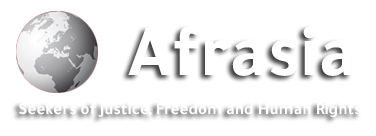
Afrasianet - Said Shibl - What is happening today in the West Bank cannot be seen as mere indiscriminate settlement expansion, but rather as a systematic policy aimed at annexing the area without an official announcement.
During the first third of July, more than 26 cases of direct attacks can be documented, with an average of two or three attacks per day, which is in line with the rates of the past two months, and the patterns of assault ranged from forced eviction, shooting, razing land, stealing shepherds' livestock, as well as setting fire to buildings and cars. and places of worship, all with the semi-official support of the Israeli army.
According to Palestinian statements, in conjunction with the outbreak of war in the Gaza Strip, Israeli forces and settlers killed at least 954 Palestinians, the largest percentage of whom are Palestinian citizens who do not carry weapons, in light of the statements of a number of ministers of Netanyahu's government, calling for full military control over the West Bank, and the start of building new settlements, ensuring the Israelization of the entire region.
The rise in violence has attracted the attention of many international circles, and the issue is no longer confined to the Arab or Islamic political field, as there are European bodies such as the German Foreign Ministry and the European Union that have demanded during the past few days "the need to protect Palestinians from settler violence, investigate the attacks, and condemn the parties behind them."
The reality of the West Bank: between Israeli control and settlement expansion
The West Bank extends from the Jordan River in the east to the Green Line in the west, and represents 21% of the area of historic Palestine, which is about 27,000 square kilometers, and is inhabited by about 3.4 million people, although this figure does not include the entire population of East Jerusalem, nor does it include Israeli settlers, who number between 700,000 and 750,000 settlers in the West Bank.
According to the Oslo Accords, the West Bank is divided into three areas, the largest of which is Area C, 60% of the area of the West Bank, and is under full Israeli control, both civil and security, and includes settlements, bypass roads and the Jordan Valley, while the Palestinian Authority controls 18% of the area of the West Bank within the boundaries of Area A, and includes major cities such as Ramallah, Nablus, Bethlehem and Jenin, but the occupation forces enter it whenever they want to carry out arrests or military operations, while the rest of the area is within Area B, and represents about 22% of the total area of the West Bank is under Palestinian civil administration, but security is under Israeli control, often including villages and towns surrounding cities.
With an objective view, Israel directly controls the West Bank, as well as crossings, borders, water lines and electricity networks, while the Palestinian Authority only manages isolated enclaves in Area A and parts of B, and as for settlements, there are about 160 settlements recognized by the occupation government, in addition to a hundred illegal outposts (according to Israeli law itself).
Over the past two years, plans to build thousands of settlement units, expand existing ones, and legitimize new outposts have been announced, and the Netanyahu government has begun to grant settlers administrative and security powers in some Area C, akin to "settler autonomy."
This coincided with the Israeli occupation forces carrying out periodic arrests and assassinations even within the areas supposed to be under the control of the Palestinian Authority, while the settlers have turned from mere unofficial tools of control over the territory, to a spearhead in the Zionist project aimed at imposing full control over the West Bank and effectively annexing it to Israel.
Right-wing government fuels violence, plans to annex West Bank
What distinguishes this phase is the public and explicit support of Benjamin Netanyahu's government, which includes ministers known for their extremist positions, such as Itamar Ben-Gvir, Minister of National Security, who has repeatedly stated that the Palestinians are "strangers in the Land of Israel," and Bezalel Smotrich, Minister of Finance, who runs part of the Civil Administration in the West Bank and seeks to legalize dozens of informal outposts.
What is happening today in the West Bank cannot be seen as just random settlement expansion, but rather a systematic policy aimed at annexing the area without an official declaration, and instead of facing the international reactions that may result from a legal annexation, Israel will:
First, the imposition of a new reality on the ground, through continued settlement expansion, as is the Israeli decision last May, to establish 22 new settlements, including four along the border with Jordan.
Second, the transformation of informal outposts into official settlements, a practice that has been followed since the occupation of the West Bank in 1967, where settlers control a strategic point, then illegally establish housing, and over time the government recognizes their settlements and "legalizes" their status.
Third, the division of the West Bank into isolated enclaves and the construction of bypass roads that surround Palestinian villages, making Palestinian geographical contiguity almost impossible, while facilitating Israeli security control.
Fourth, the gradual withdrawal of land from Palestinians, through administrative confiscation, or through the forced expulsion of residents, as happened a few days ago, when 30 Palestinian Bedouin families were forced to leave the area of Al-Ma'rajat, northwest of Jericho, after suffering due to repeated attacks by extremist settlers.
Thus, according to this gradual plan, which is being implemented on the ground without an official declaration, the Palestinian is gradually transformed from being a citizen supposed to be part of an independent and sovereign state, to a mere resident trapped in isolated and fragmented enclaves, resembling "cantons" surrounded by walls, settlements and soldiers, deprived of freedom of movement and control over his land and destiny.
The West Bank and Gaza: Two Chapters in the Occupation Narrative
From the Gaza Strip to the West Bank, there is only one Israeli goal: to control the Palestinian territories and expel their inhabitants. The problem facing the Israeli government is related to the fact that the number of Jews today in Israel is unable to keep pace with expansionist dreams, whether due to the low fertility rates or the high number of departures from the entity, in what is known as reverse immigration, thanks to the operations carried out by the various resistance arenas, from Gaza to Tehran, over the past months and years.
In the Gaza Strip, according to the Palestinian Central Bureau of Statistics, the number of martyrs has exceeded 57,000, and there are announced plans, under the direct auspices of the US administration, to displace Gazans outside the Strip, and in the West Bank there are at least 40,000 people who have already been displaced since the start of the last Israeli offensive, in addition to hundreds of martyrs and injuries who fell as a result of the Israeli killing machine, whether the killer was a soldier in military uniform or a settler in civilian clothes.
Despite the repeated condemnations issued by a number of world capitals and major international institutions regarding Israeli policies in Palestine in general, these condemnations remain in the realm of ineffective statements, as these positions have not been translated into punitive measures capable of curbing Israeli policy or forcing a retreat from expansionist steps on the ground.
Washington, as the most prominent ally of Tel Aviv, is not satisfied with financial and military support, but continues to use the veto power in the Security Council to abort any international resolution that would impose effective accountability for Israeli violations. land, without fear of consequences or penalties.
After control. Towards a Complete Settlement Reality
Today, Israel has exceeded the limits of conventional military occupation in the West Bank, reaching an advanced stage of a replacement project that seeks to completely erase the Palestinian presence, without the need for an official declaration, as the facts imposed on the ground, from rapid settlement expansion, to forced displacement, the division of geography, and the erosion of Palestinian sovereignty. They constitute the features of a full-fledged settler-colonial system.
With the continuation of this reality, and the absence of any real deterrence, the task of the Arabs today is not only to resist the Israeli occupation, but to prevent it from becoming a permanent destiny, and it is certain that in the face of this plan, the unity of the squares, the building of an integrated resistance project, and the pressure on the international community to break its silence become irreplaceable steps.

